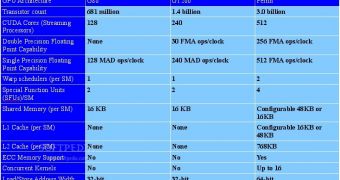Just hours have passed since the Santa Clara, California-based graphics chip maker officially announced its next-generation Fermi GPU architecture, designed to power some of its upcoming products, including a new line of GeForce, Quadro and Tesla graphics cards. Built on TSMC's 40nm manufacturing process, the new GPU is said to deliver a number of performance improvements thanks to the implementation of new features that enable the graphics processing unit to deliver a better support for an array of applications that will provide NVIDIA with a wider customer base.
According to the chip maker, the Fermi is a new architecture altogether, much like the company's previous line of G80 and GT200 graphics processing units. There are a couple of significant changes offered with the new architecture, which NVIDIA hopes to allow it to address a wider audience, especially in the high-performance computing segment, with the introduction of the new Fermi-based Tesla products. For a better understanding of the differences between the three architectures, be sure to check out the compiled table.
As it was speculated prior to the official debut, Fermi will be built on TSMC's 40nm manufacturing process and will support Microsoft's upcoming DirectX 11 API. Unfortunately, the graphics chip maker has continued to stay tight-lipped on details such as clock speeds and memory capacity, for any of its next-generation cards. However, Fermi is scheduled to arrive sometime in the fourth quarter of 2009, although general availability of NVIDIA's next-generation cards is expected sometime in Q1 2010.
On a side note, the fellows over at bit-tech have been on show at Jen-Hsun Huang's opening keynote at the GPU Technology Conference in San Jose, California, where NVIDIA's CEO revealed the first graphics card that was built on the latest Fermi architecture. Unfortunately not much has been made available on the specifications of the cards, but the aforementioned articles speaks of an 8-pin and a 6-pin connector, as well as a dual-slot design.

 14 DAY TRIAL //
14 DAY TRIAL // 
